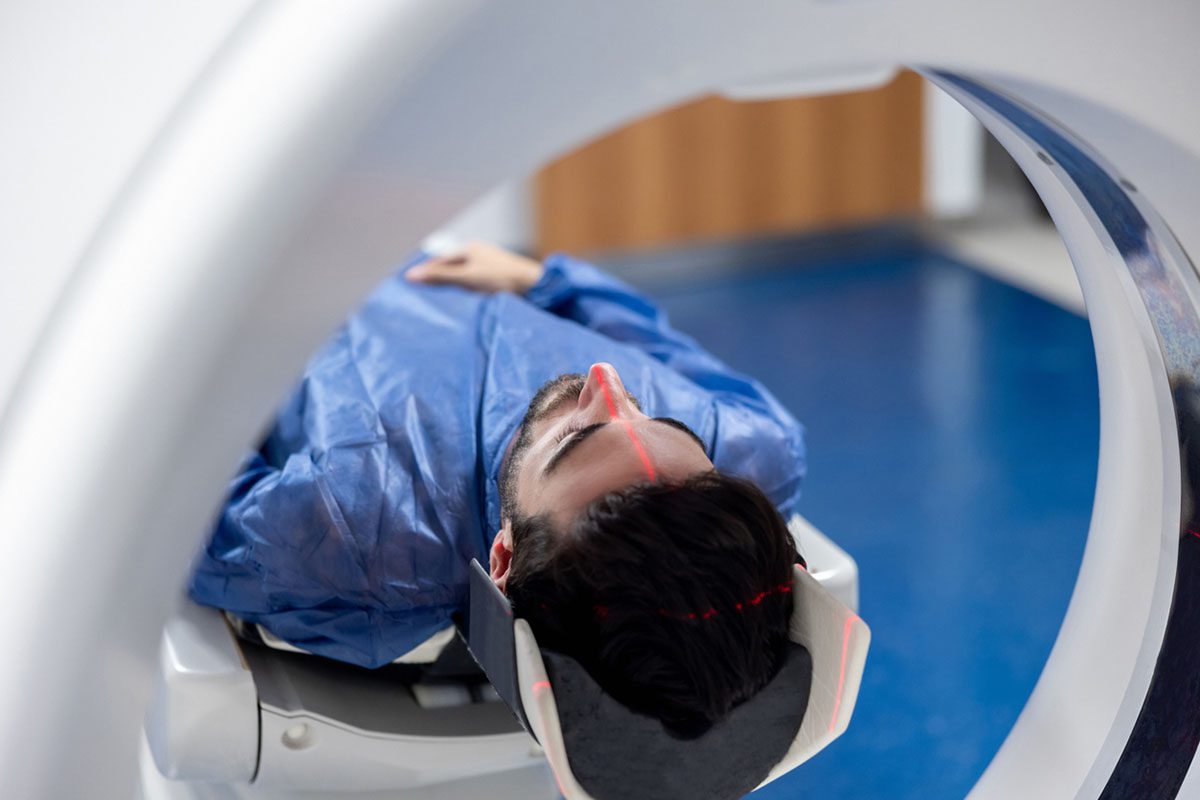Because this piece does not have an abstract, we have provided for your benefit the first 3 sentences of the full text.
Clinical lycanthropy (or lycomania) is a zoanthropy (or therianthropy) that occurs when an individual believes that he or she is undergoing transformation into a wolf (Canis lupus). It is a rare, fascinating, and controversial phenomenon lost somewhere between the reverse intermetamorphosis subtype of delusional misidentification syndrome2 and culture-bound syndromes.
A 41-year-old man with a history of schizoaffective disorder since age 20 years was seen in an outpatient psychiatric consultation setting for intermediate insomnia, nocturnal agitation, and aggressiveness with auditory hallucinations, loud howling, and delusion of lycanthropy.


Clinical Lycanthropy (lycomania) in Neuropsychiatric Patients With Obstructive Sleep Apnea
Clinical lycanthropy (or lycomania) is a zoanthropy (or therianthropy) that occurs when an individual believes that he or she is undergoing transformation into a wolf (Canis lupus). It is a rare, fascinating, and controversial1 phenomenon lost somewhere between the reverse intermetamorphosis subtype of delusional misidentification syndrome2 and culture-bound syndromes.3
Case Report 1
A 41-year-old man with a history of schizoaffective disorder since age 20 years was seen in an outpatient psychiatric consultation setting for intermediate insomnia, nocturnal agitation, and aggressiveness with auditory hallucinations, loud howling, and delusion of lycanthropy. When asked about his behavior, he explained that he woke up in the middle of the night hearing voices telling him that he would transform into a wolf. During those episodes, he would look in the mirror and not recognize himself but see a werewolf instead. These symptoms had developed over the last 6 months, exhausting his family who also complained about chronic snoring. He had been on many combinations of tranquilizers, antidepressants, antiepileptics, and antipsychotics in the past. He was nearly obese (body mass index [BMI] of 28 kg/m2), and his blood work was conclusive for uncontrolled diabetes mellitus and combined dyslipidemia. A computed tomography (CT) scan of the brain and electroencephalography (EEG) were within normal limits. Polysomnography revealed an excessive fragmentation of sleep, with increased duration of the N2 phase, high rapid eye movement (REM) latency, and diminishing of N3 and REM phases. His apnea hypopnea index (AHI) score of 7.3/h was suggestive of mild obstructive sleep apnea (OSA). The neuropsychological evaluation revealed impulse control difficulties and an immature personality with mild mental retardation. The medication he was taking for schizoaffective disorder (ICD-10 code F25.8 code) was adjusted: haloperidol decanoate 300 mg monthly intramuscular injection plus valproate 1,000 mg/d, fenofibrate 200 mg/d, simvastatine 20 mg/d, and metformin 500 mg/d. He was given psychoeducation regarding treatment adherence, diet, exercise, and sleep hygiene. He was referred to a pulmonology appointment but, unfortunately, refused treatment with a continuous positive airway pressure machine. After losing some weight (BMI decreased to 25 kg/m2), his snoring remitted, and no new episodes of lycanthropy were reported.
Case Report 2
A 52-year-old man with a history of recurrent depression with dissociative and conversion disorder since age 37 years was admitted to a psychiatric ward for agitation, aggressiveness with kinesthetic hallucinations, loud growling, and delusion of lycanthropy. When asked about his behavior, he explained that he felt bugs all over his abdomen and had an uncontrolled urge to bite the other wolves to get rid of those parasites. These symptoms had developed over the past 4 years, exhausting his family, who also complained about chronic snoring. He had been prescribed many combinations of tranquilizers, antidepressants, antiepileptics, and antipsychotics. He was obese (BMI of 32 kg/m2), and his blood work indicated uncontrolled hypertriglyceridemia and diabetes mellitus. A CT scan of the brain revealed bilateral perisylvian atrophy, but EEG results were within normal limits. Polysomnography revealed an excessive fragmentation of sleep with a prevalence of N1 and N2 phases, and his AHI score of 47.6/h was suggestive of severe OSA. The neuropsychological evaluation revealed mild cognitive impairment with temporal disorientation, amnestic deficit in evocation, and dyscalculia. He was diagnosed with organic dissociative disorder (ICD-10 code F06.5), and his medication was adjusted to daily oral quetiapine 900 mg, trazodone 150 mg, metformin 1,500 mg, and bezafibrate 200 mg. He received psychoeducation regarding treatment adherence, diet, exercise, and sleep hygiene. He was referred for a pulmonology appointment but, unfortunately, refused treatment with a continuous positive airway pressure machine. After hypnotic medication adjustment, his snoring remitted, and no new episodes of lycanthropy were reported.
Discussion
Lycanthropy has been described in many neuropsychiatric conditions, especially those affecting the parietal lobes. The parietal lobes are the primary association area of sensory cortices with an important yet complex role in the integration of sensory information from various regions of the body; therefore, they might be closely related to the pathogenesis of somatic delusions.4 One neuropsychological explanation for lycanthropy, as a delusional misidentification syndrome, implicates a cognitive dissociation arising from a mismatch while processing a familiar face (through the dorsal and ventral visual pathways), leading the patient to search for an alternate explanation. This mismatch may be the basis for the content of the delusion, while the impairment in the belief evaluation system preventing the delusional explanation from being rejected may complete this 2-factor theory.5
Our cases are, to our knowledge, the first reports of lycanthropy associated with OSA, although we found an individual online who claims to suffer from both of these conditions.6 We believe the awakenings or hypoxemic periods induced by OSA may have contributed to lycanthropy in both of our patients. It is possible that these 2 phenomena may be linked, such that a sleep-wake transition disorder is produced, leading to an altered perception and subsequent psychiatric symptoms. These case reports highlight the need to rule out any underlying neurologic dysfunction7 whenever a lycanthropy syndrome is present.
Published online: November 7, 2019.
Potential conflicts of interest: None.
Funding/support: None.
Patient consent: Permission was obtained from the patients to publish these case reports, and information was de-identified to protect anonymity.
REFERENCES
1.Davis WM, Wellwuff HG, Garew L, et al. Psychopharmacology of lycanthropy. CMAJ. 1992;146(7):1191-1197. PubMed
2.Shrestha R. Clinical lycanthropy: delusional misidentification of the “self.” J Neuropsychiatry Clin Neurosci. 2014;26(1):E53-E54. PubMed CrossRef
3.Bou Khalil R, Dahdah P, Richa S, et al. Lycanthropy as a culture-bound syndrome: a case report and review of the literature. J Psychiatr Pract. 2012;18(1):51-54. PubMed CrossRef
4.Moselhy HF. Lycanthropy: new evidence of its origin. Psychopathology. 1999;32(4):173-176. PubMed CrossRef
5.Coltheart M, Langdon R, McKay R. Schizophrenia and monothematic delusions. Schizophr Bull. 2007;33(3):642-647. PubMed CrossRef
6.Clay F. Four things everyone with sleep apnea should understand. http://www.cracked.com/blog/when-sleep-killing-you-4-things-i-learned/. Accessed October 16, 2019.
7.Blom JD. When doctors cry wolf: a systematic review of the literature on clinical lycanthropy. Hist Psychiatry. 2014;25(1):87-102. PubMed CrossRef
aHospital Júlio de Matos, Centro Hospitalar Psiquiátrico de Lisboa, Lisbon, Portugal
bClínica Universitária de Psiquiatria e Psicologia Médica, Faculdade de Medicina, Universidade de Lisboa, Lisbon, Portugal
*Corresponding author: João Gama Marques, MD, Hospital Júlio de Matos, Avenida do Brasil, 53, 1749-002 Lisbon, Portugal ([email protected]).
Prim Care Companion CNS Disord 2019;21(6):19l02449
To cite: Gama Marques J. Clinical lycanthropy (lycomania) in neuropsychiatric patients with obstructive sleep apnea. Prim Care Companion CNS Disord. 2019;21(6):19l02449.
To share: https://doi.org/10.4088/PCC.19l02449
© Copyright 2019 Physicians Postgraduate Press, Inc.
Please sign in or purchase this PDF for $40.00.




